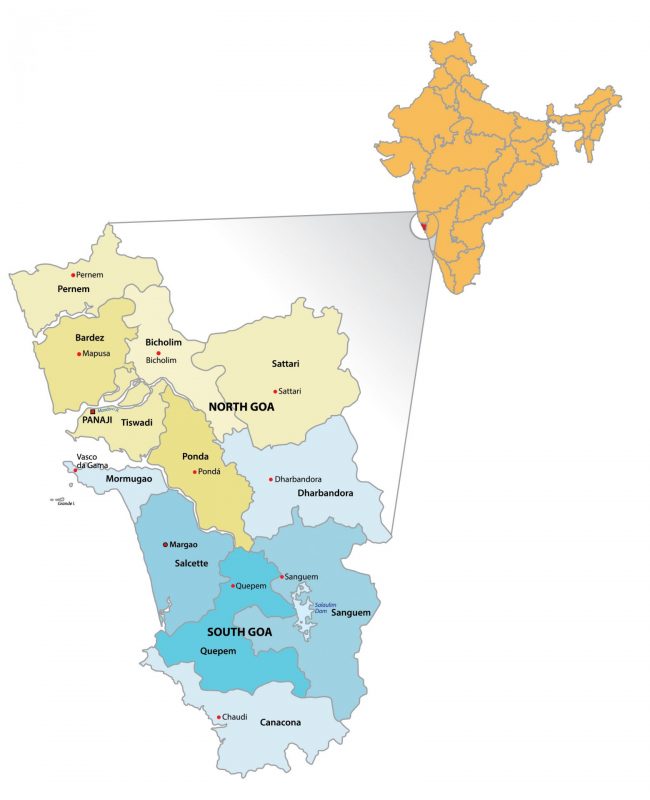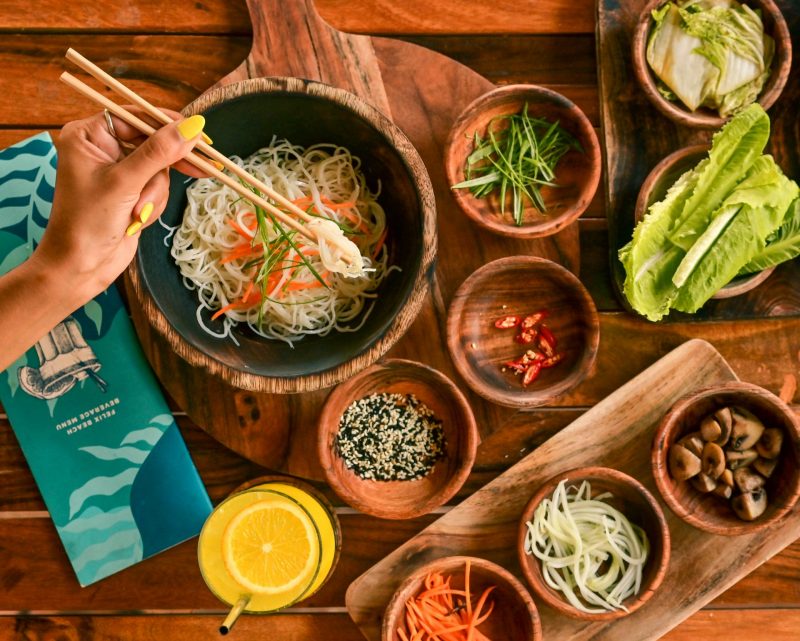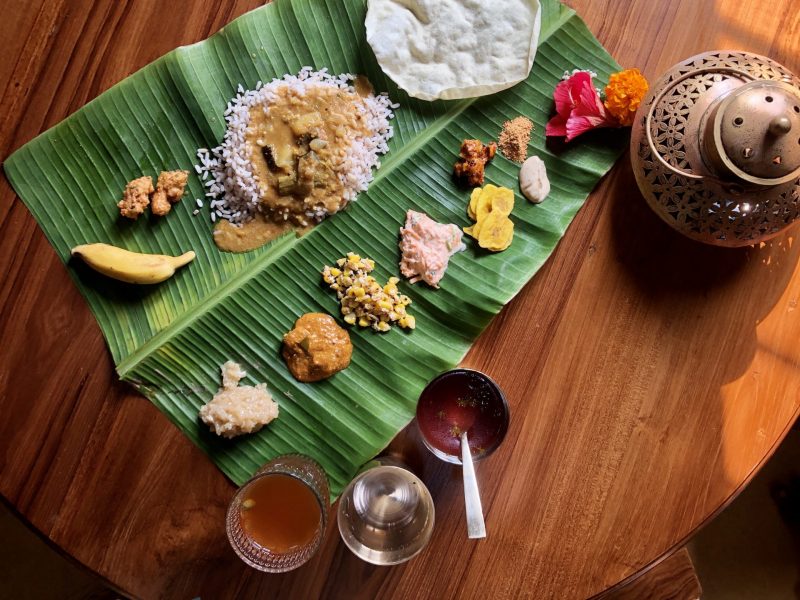This article originally appeared in the Fall-Winter 2022/2023 print issue of Quench Magazine.
There’s no place like Goa.
Colonized by the Portuguese till as recently as the 1960s, then a mecca for hippies from the Global North, this seaside state has long challenged the concreteness of geographic boundaries. Its openness – and some say easy permeability – is what gives it its unique, syncretic culture. Any attempts to pigeonhole Goan things into categories like ‘East’ or ‘West’ fails. Hard.
Recently, Goa has become a favorite destination for domestic travelers, many of whom have found the good life of sea, sun, and susegad tempting enough to make it a permanent home. While some locals say this wave of Indianization has changed Goa’s hippie-alternative vibe forever, others are grateful for the professionalization of industry it has brought in. In a place infamous for slow service, Swiggy and Zomato are just a click away.
I, like many urban, privileged Indians, spent a good part of the winter in a village in North Goa. Though ‘village’ is the technical term to describe the land I resided in, it is misleading when you think that about twelve restaurants – including a Tapas bar, a traditional Tamil restaurant, a Mexican-Goan establishment, and an ironically trashy Chinese takeaway – were all in my neighborhood. Let’s just say I was never, ever hungry, nor at a loss of ideas for how to spend money.
What follows is an ‘Unexpected Eating Guide to Goa’ that intends to capture the deep cultural mix that characterizes, and has always characterized, the state. Unlike many hip guides that are dominated by fancy, one-syllable named restaurants, or places so local that we’d never find out about them without ‘going native,’ this is a healthy mix of both: the new and the old, the professional and urbanized.


ANTONIO 31, Fontainhas, Panjim
In the Latin quarter of Panjim, which many well-heeled travelers compare to Lisbon, are streets lined with small, curbside restaurants. A favorite amongst these is Antonio 31, which is even more special for its tiny-ness. These days, it’s hard to score a place, and forget having a conversation that you don’t want to be overheard.
Antonios does an amazing job of mixing Goan ingredients and flavors with gastronomic trends. The butterfly pea flower gin infusion, crispy baitfish, and truffle mushroom rissois (a crumb fried Goan snack) are all very satisfying. Many frequenters are there just for the hay smoked mackerel, which has an umami they closely associated with the Old Panjim. The nostalgia is palpable, but not overbearing.
TAMIL TABLE, Assagao
Traditional Tamil food, served in a gorgeously designed restaurant. Tamil Table mixes the traditional and contemporary in every way: many of the dishes will arrive on traditional banana leaves (which serve as plates), but your cocktails will pop with bright, instagrammable colors. You may find an edible butterfly in your Goan made gin.
Loyalists are used to the comparatively smaller plates that burst with flavor, while first timers may find the hearty cocktails to be more value for money. Either way, the duck pakoras, curry leaf prawns, coconut milk pulao, and aubergine curry are mouth-watering plates that can be enjoyed for lunch or dinner.
SEA VIEW, Dona Paula
A restaurant that you’d be hard pressed to find on any guide, Sea View is a bit of a forgotten secret. I would have missed it if not for the Dona Paula local who took me there and promised that the lack of conventional good taste in aesthetics would be made up for by the wonderful seafood.
He was right. Sea View is proud of its datedness, which justifies its authentic, old-school seafood. Here you’ll get butter garlic squid the way it’s supposed to be, rava fried mussels, and lepo (tongue sole) – also best in most traditional rava (semolina) coating. For lovers of spices, the recheado masala is great on the squid: the kick you’ll sense is from the chef’s clever use of cinnamon.
FELIX BEACH, Morjim
Felix Beach takes inspiration from the classic Goan beach shack, but updates it to bring you every urban creature comfort you desire. This is one of the only places in North Goa where you can dip into the sea between tiki cocktails and negronis, have beach towels, clean showers, and excellent internet all provided for you. The chefs source from the best seafood and grocery vendors across town. The Thai-spiced clams, grilled lobster, and red snapper poke are most recommended.

HIDEAWAY, Vagator
A TripAdvisor reviewer calls Hideaway the ‘coolest local hangout,’ and I cannot disagree. A relaxed pre-party spot, or ideal place for a chilled out dinner, Hideaway is low-key, friendly, and manages to keep you happy without trying too hard.
I fell in love with it as soon as the server confirmed how dirty I wanted my dirty martini, with just a hint of a smile. Hideaway is run by three gentlemen who began this venue to indulge their equal love for food and music. They host talented artists from across India through the season, and it is not unusual to find their gig nights filled with people swaying to Afro beats, disco, and house.
Plates are made for sharing, so ordering for the table is recommended. The chorizo chili, coupled with mustard greens and some fiery chili, is excellent. The cocktail, ‘Nights in Tropicale’ is a liquid ode to Goa, and for that reason alone, must be sampled.
KOKNI CANTEEN, Panjim
Located in the heart of Panjim, Kokni Canteen is a family establishment that is serious about serving home cooked seafood, straight up. Everything here is uniquely ‘kokni’ (read: authentic) and you’ll find no submission to hipster trends, or ‘cool’ ingredients, unless they belong in the original recipe. Transparency runs large: there is even a dynamic chalkboard on the wall that lists the variety of seafood available, with the price of the fish, per kilo.
While many come here for freshly cooked crab (a great idea), if you cannot decide between the wealth of seafood options, settle for the Bappa Thali. It comes with a crab and prawn curry, mussels and fried fish. Only fish in season are served. A cocktail called ‘Traffik Jaaam’, which is maybe a witty comment on a changing Goa, is a refreshing accompaniment to just about anything.
SAPPADU, Assagao
Located on a quiet lane in one of Goa’s fanciest neighborhoods, Sappadu, is perhaps the perfect example of how traditional food can be relevant and exciting to an urban, cosmopolitan demographic without giving into larger, food ‘scene-y’ pressures.
The establishment is bright and minimal, and resembles a tasteful South Indian home. From the entrance (where you are asked to leave your shoes), you can peek far into the traditional kitchen where a highly organized, familial system of cooking and serving is discernible.
There’s nothing like the traditional Sunday lunch if you can make it for one, but if not, the set meals on any weekday are splendid and reasonable. While the menu changes weekly, there are some constants, like the rasam – flavored with seasonal fruits – sambhar, and spiced potatoes. The okra poriyal and ragi dosas are glowingly fresh and lightly cooked. Whatever it is you order, you must finish with one of their beautifully wrapped paans. The restaurant is 100% vegetarian and alcohol is not served.

7 SHORT 1 LONG, Moira
If someone in Goa personifies the phrase “the hostess with the mostest” it is Belinda, the owner and hands-on-chef of 7 Short 1 Long. Warm, friendly, and unforgettable, a testament to her distinct character are the online reviews, which focus on customer conversations with her almost as much as the food.
The fare at 7 Short 1 Long can be described as Goan-contemporary, but has a hardcore homemade vibe. The Cajun calamari with aioli for example, made with fresh-from-the-sea squid is delectable, as is her take on Thai prawn curry. She’s also somewhat of a tongue chili magician and can get nervous diners to try this Goan classic with the gentlest of nudges.
TEJA, Anjuna
Once upon a time, Goans in the same neighborhood could get into feuds about which fish thali establishment was better, and their arguments would be strong and nuanced. Now, thanks to the cafe-ification of Goa, it’s not so easy to find a thali place you can call your ride or die.
Teja in Anjuna is a rare thali place many Goans would still get into fights for. Despite its location in the heart of touristy, chaotic Anjuna, it has retained its authentic Goan charm. It’s the kind of place where the ladies cooking in the back still have time to talk to you, and striking up a conversation with the people seated at the next table is not unusual.
All their thalis are amazing, but the kingfish is a favorite. When in season, the pomfret thali is also a winner. Please order with a side of clams.
AGNELO BAKERY, Siolim
You’d be forgiven for missing this little bakery, right next to Siolim Market. But for those in the know, breakfast in sleepy Siolim is one of Goa’s most pleasurable experiences, thanks mostly to its local, family run bakeries.
Agnelo bakery serves village famous beef croquettes. As locals know, the earlier you get there, the better, as freshness waits for no one. Sannas – authentic Goan breads made from coconut – are also recommended for anyone who likes something a little savory with their morning news.
Meher Varma is a New Delhi based anthropologist, writer and brand strategist. She regularly writes for Indian and international food and lifestyle publications and hosts a podcast called ‘Bad Table Manners’ for Whetstone Radio. Since completing her PhD from UCLA in 2015, Meher has been working as a creative storyteller with an ethnographic approach. Her go-to restaurant that never disappoints is Carnatic Café in New Delhi for a casual meal and Tres for something fancy.
